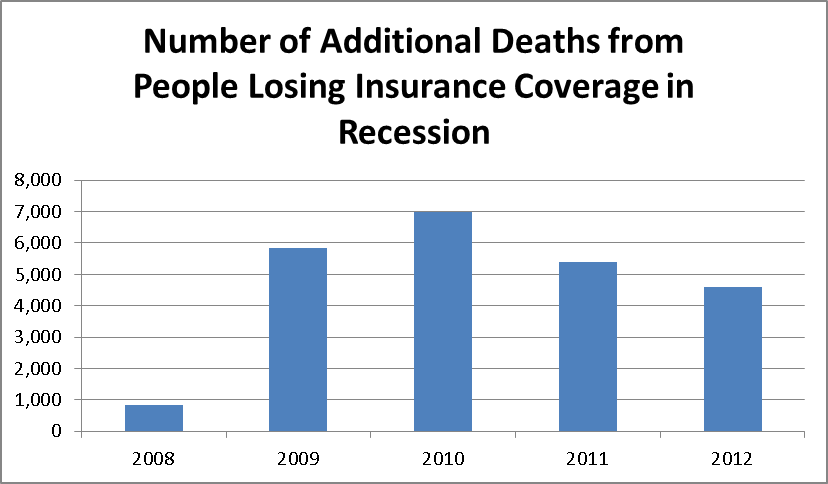May 08, 2014
A new study on the reduction in mortality rates in Massachusetts following the implementation of RomneyCare has received a great deal of attention. The analysis finds a substantial reduction in mortality rates associated with the extension of insurance. Furthermore, it identifies this reduction with lower death rates from treatable conditions, like heart disease.
Based on this analysis, some people have pointed to the additional deaths that we can expect to see in states that refuse to expand their Medicaid programs. This refusal stems from the opposition of Republican officeholders at the state level to cooperate with the Affordable Care Act (ACA). Since the Supreme Court decision made it optional for states to expand their Medicaid program, most of the states that are under Republican control have refused to do so.
While it is worth calling attention to the cost in human lives of this decision, it is also possible to use the new study to make a more bipartisan condemnation of public policy. The Great Recession was the result of decisions by leaders in both political parties to set the economy on a path of bubble-driven growth. In this sense they share responsibility for the downturn that followed the collapse of the housing bubble.
They also share responsibility for the failure to provide adequate stimulus to boost the economy back to full employment. We have known at least since Keynes wrote the General Theory in the 1930s how to pull an economy out of a severe downturn: spend money. We tested this theory with massive spending during World War II which pushed the unemployment rate down to 2.0 percent.
However spending to grow the economy and create jobs is not on the political agenda in Washington. There is a cult of balanced budgets, which argues that we need to keep our deficits down even in a period of high unemployment. Followers of this cult are content to keep millions of people unemployed or underemployed so that we can have lower budget deficits.
According to this new study, the folks pushing lower budget deficits are also prepared to see thousands of people die. The reason is that we know that fewer people have health insurance coverage during periods of high unemployment. And from this study, we know that people without health insurance coverage are more likely to die.
The exact impact of unemployment on coverage is difficult to determine. Most of the people who have insurance who are below age 65 (the cutoff for Medicare eligibility) are covered through their employer or the employer of a family member. This means that when more people have jobs, more people will have insurance. However, fewer employers are covering people, which is a factor going in the opposite direction over time.
If we look at the period before the downturn, the number of people with coverage through an employer had been rising consistently. It went from 177.4 million in 2003, the year when the economy first began adding jobs following the prior recession, to 179.0 million in 2007.
It is reasonable to assume that this number would have at least stayed constant had the economy not collapsed the following year. As a result of the recession the number of people insured through an employer fell to 169.4 million in 2010, before recovering somewhat to 170.9 million in 2012, the last year for which data are available.
Some of the people who lost employer-based coverage were able to get government insurance, primarily Medicaid. However many were not. The number of uninsured rose by 5.9 million in 2010 compared to where it had been in 2007.
Based on the Massachusetts study we can also attach an additional number of deaths to this rise in the number of the uninsured. This is shown in the figure below.

Source: Census Bureau and author’s calculation.
Applying the estimate from the Massachusetts study of one additional death for every 840 uninsured people, there would have been 6980 additional deaths in 2010 as a result of the downturn. The cumulative total of additional deaths for the years 2008 through 2012 would be 23,620. If 2013 is similar to 2012 in terms of the number of uninsured, the total additional death count through 2013 would be close to 28,000.
These numbers are obviously crude estimates. Many factors other than insurance will have affected death rates in these years, including other effects of the downturn. But the Massachusetts study gives us a basis for projecting the cost in human lives of the downturn and the prolonged period of high unemployment that followed.






